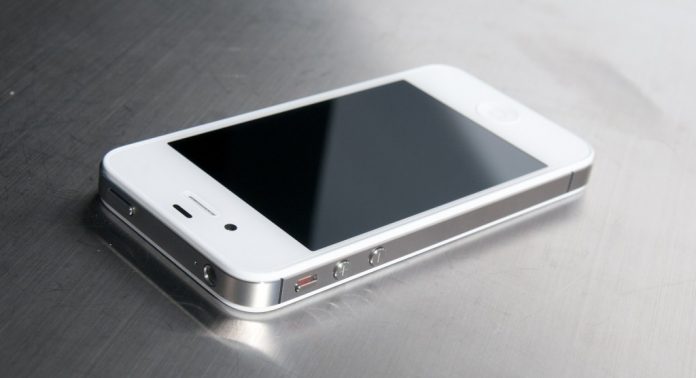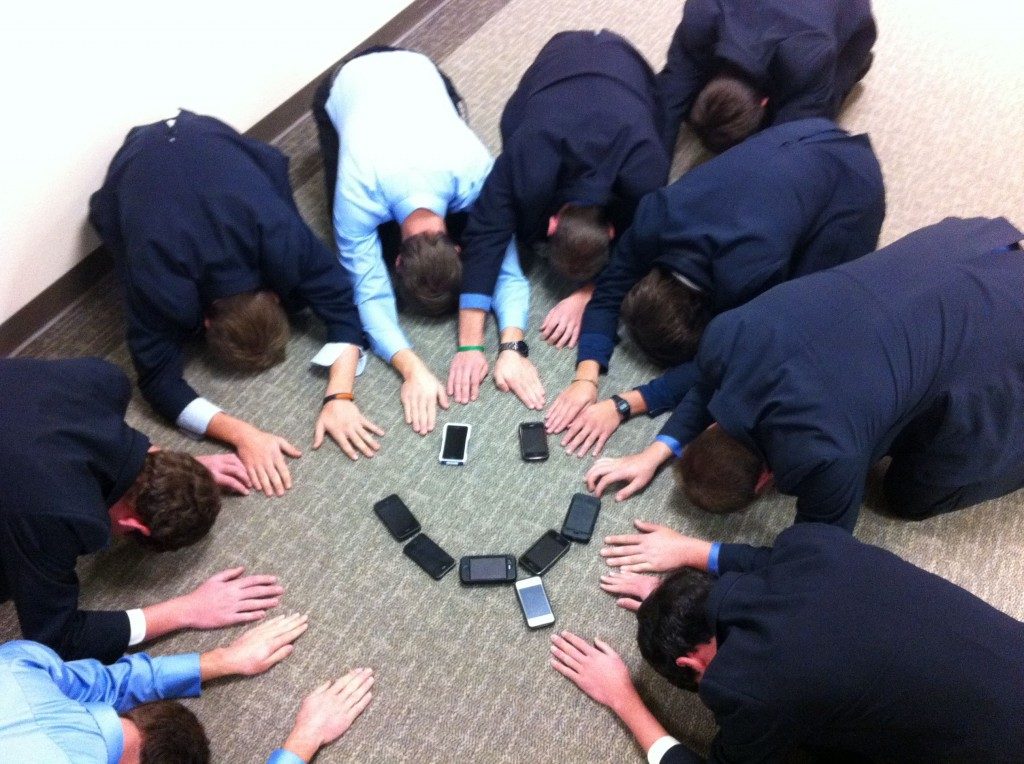The iPhone 4 was one of the best, if not the best, mobile smartphone when it hit the market in the summer of 2010. It featured a robust five-megapixel camera, an all new design, a front-facing camera, and above all a retina display. The retina display was so ahead of the curve that other smart phones have still failed to keep up: there has yet to be a display in other smartphones that has a higher pixel density (the iPhone 4’s retina display pixel density is 326ppi or pixels per square inch).
In addition, Apple sold approximately 1.7 million iPhone 4’s (not to be confused with the iPhone 4S) in its opening alone. iPhone 4 sales increased even further when Apple added Verizon to its carrier list for the iPhone. And now, Apple has launched iCloud, iOS 5 and of course – the brand new iPhone 4S, which continues the success of the iPhone 4.
The Design:
When you first look at the iPhone 4S, it is hard to notice any distinguishing factors between the iPhone 4’s design and the design of the iPhone 4S. For this generation of the iPhone, Apple has decided to stick with its leading design. In fact, the iPhone 4S features the exact same dimensions in height, width and depth. However, the iPhone 4S does weigh approximately 3 grams more than the iPhone 4.
 The iPhone 4S features glass plates on the front and back and a stainless steel band that runs around the perimeter of the phone. It also houses the antenna system, a front-facing VGA camera, and an all-new 8MP camera. The phone comes in the colors of white and black at the time of release.
The iPhone 4S features glass plates on the front and back and a stainless steel band that runs around the perimeter of the phone. It also houses the antenna system, a front-facing VGA camera, and an all-new 8MP camera. The phone comes in the colors of white and black at the time of release.
Despite the phone maintaining the same look, I believe that iPhone 4S’s design is still way ahead of the curve. The iPhone 4S is still the thinnest phone in the world (yes, the iPhone 4S is thinner than the Droid Razr as its bump extends to 11.1mm as compared to the iPhone 4S’s thickness which is 9.3mm). Many were expecting a bigger screen in this generation iPhone. Although there is legitimate reason for a larger screen, extending the screen would create problems with maintaining a “retina display” pixel density, which is generally considered to be 300ppi or higher.
There also comes the problem of maintaining consistency in the iPhone line. Consistency within Apple’s product line propels them over Android both with application developers and with users. Despite the iPhone 4S’s proneness to potentially glass-shattering drops, the design still proves to be one of the best (if not the best) in the industry.
 I personally love the design as I never drop my iPhone. That being said, however, one can expect the next generation iPhone to feature a brand new design in 2012.
I personally love the design as I never drop my iPhone. That being said, however, one can expect the next generation iPhone to feature a brand new design in 2012.
The Internals:
The internals are what make the iPhone 4S such a great phone. While The iPhone 4 features a powerful single core A4 chip, which runs at just under 1Ghz, the iPhone 4S now features the dual core Apple A5 chip that is also present in the Apple iPad 2. The A5 chip speeds up daily tasks all around such as reading email, surfing the web, and using social networking sites; however, users will notice that biggest difference in gaming.
Apple claims that the dual core A5 chip provides up to 7x the graphical performance when running games. This not only means that games will look better, it also means that developers like Epic Games who create Infinity Blade will be able to create games with more visual effects and better detail all around.
Overall, the general user will notice a difference between the processing speed of the iPhone 4 and the iPhone 4S, but it is not as substantial as one might think. The average user will only notice moderate speed increases, but gamers and those who use their phones more than they sleep will notice the speed increase.
Something that is perhaps a little overlooked is the new antenna system. The iPhone 4 had the “antennagate” issue in which users complained that holding the phone in a certain way could cause them to lose signal. Apple has addressed that problem and has fixed it in its latest generation iPhone.
More specifically, the antenna now intelligently switches between two antennas to transmit and receive data – this has never been done in a phone before. Furthermore, even when one is on a phone call, the phone can switch antennas in order to gain better call reception.
In addition, the iPhone 4S’s  antenna system allows for faster data speeds – 4G data speeds. Whereas the iPhone 4 had upload speeds of 5.8 Mbps and download speeds of 7.2 Mbps, the iPhone 4S can now download files at a speed of 14.4 Mbps. This is interesting because those are the exact same data speed standards on 4G phones. While the iPhone 4S does not support 4G LTE, it does support the same data speeds.
antenna system allows for faster data speeds – 4G data speeds. Whereas the iPhone 4 had upload speeds of 5.8 Mbps and download speeds of 7.2 Mbps, the iPhone 4S can now download files at a speed of 14.4 Mbps. This is interesting because those are the exact same data speed standards on 4G phones. While the iPhone 4S does not support 4G LTE, it does support the same data speeds.
The iPhone 4S is now also a world phone. This means that the iPhone 4S features a chip that can support both GSM and CDMA networks, allowing users to use one iPhone around the globe rather than two. While many of us will never need this capability, this addition is also very nice for simplicity. There is now only one model of the iPhone 4S for all three mobile carries. Gone are the days of a separate “Verizon iPhone” and “AT&T iPhone.”
The 8MP Camera:
While the front facing camera remains unchanged from the previous generation iPhone, the iPhone 4S features an all new (and very impressive) 8MP rear camera. Not only does the camera have a higher 8MP sensor that has 60% more pixels than the iPhone 4’s sensor, but the camera also goes even further. Those familiar with photography will know that adding more megapixels does not necessarily make the photo better. As a result, Apple has built in five separate lenses, a new backside illuminated sensor that attracts 735% more light than the sensor in the iPhone 4, and a Hybrid IR filter that allows for better color accuracy and more color uniformity.
The Hybrid IR filter itself is significant because it is commonly placed in high end DSLR cameras from companies such as Nikon. In addition, the camera now has an f/2.4 aperture, which is really impressive for a mobile phone. As a result, the iPhone 4S will take sharper pictures and better pictures in low light; thus, it will have better overall quality of photos.
 Last, Apple has gone even further to enhance the quality of photos taken on the iPhone 4S. Within the dual core A5 chip, algorithms for face detection and white balance allow users to take photos extremely quickly. For example, the Samsung Galaxy S Tab needs 2.0 seconds to take the first photo and 1.8 seconds to take the second photo. However, the iPhone 4S takes the first photo in 1.1 seconds and the second photo in 0.5 seconds.
Last, Apple has gone even further to enhance the quality of photos taken on the iPhone 4S. Within the dual core A5 chip, algorithms for face detection and white balance allow users to take photos extremely quickly. For example, the Samsung Galaxy S Tab needs 2.0 seconds to take the first photo and 1.8 seconds to take the second photo. However, the iPhone 4S takes the first photo in 1.1 seconds and the second photo in 0.5 seconds.
In addition to the 8MP camera stills, the iPhone 4S’s camera can now take full 1080p HD video. The iPhone 4 took great video with just a 720p resolution and now the iPhone 4S takes even better video. 1080p is the same resolution as many TV sets. So this means that a video taken on the iPhone 4S will be pixel perfect on a HDTV.
My personal experience with the iPhone 4S camera has been great. The photos are just absolutely stunning. I am no camera expert, but I consider the photos taken on the iPhone 4S to be nearly as good as DSLR photos. Of course, that is from a glance, as I know that DSLRs take even better pictures; but for an iPhone to be able to take such great photos simply amazes me. Needless to say, the camera takes pictures with stunning quality – even in low light situations.
The Software: iOS 5
While iOS 5, Apple’s latest update to its mobile operating system, was unveiled back at WWDC 2011 with Steve Jobs, iOS 5 now ships in full release with the iPhone 4S. iOS 5 is as great as Apple claims. iOS 5 users will enjoy over 200 new features, including a Notification Center, iMessage, Newsstand, Reminders, Twitter, Built-In Photo-Editing, a new look for Safari on the iPad, a new Game Center, Wi-Fi Sync, Airplay Mirroring, New Accessibility features and much more.
iOS 5 was great on other devices during its beta stages, and now it is even better. It is quite clear that Apple optimized iOS for the iPhone 4S. Switching between home screen pages is butter smooth, the camera launches in an instant, web pages load in the blink on an eye, applications load quicker, games load quicker and phone calls are even made quicker.
I could easily further discuss iOS, but that is not for this article. All in all, iOS 5 is the perfect complement to a great piece of hardware. iOS 5 is available on the iPad 2, iPad 1, iPhone 3GS, iPhone 4, iPhone 4S, iPod Touch 3G and iPod Touch 4G.
Siri
 Siri is the most revolutionary aspect of the iPhone 4S. As an iPhone 4S exclusive, Siri serves as a “Personal Assistant” that can do much more than basic voice control.
Siri is the most revolutionary aspect of the iPhone 4S. As an iPhone 4S exclusive, Siri serves as a “Personal Assistant” that can do much more than basic voice control.
When Apple released voice control with the iPhone 3GS back in the summer of 2009, it didn’t do much. You could give the phone basic commands like “Play Coldplay” or “Call Jennifer,” but you couldn’t do much more than that. Apple has improved upon that with the introduction of Siri.
Siri goes far beyond the tasks that Voice Control could do. In fact, users don’t even have to talk like a robot and slowly say, “Call…. Mom…” Rather, users using Siri can ask questions like “Do I need to wear a raincoat today?” or “How is Apple doing in the stock Market?” Users can even give commands such as “Remind me to pick up my backpack at 12:45 tomorrow” or “Wake me up at 6:30 AM.” The fact that people can speak to Siri in a normal tone and language is revolutionary. Gone are the days of learning what Siri can understand – users no longer have to simply say “Rain Today?”
One other aspect of Siri is dictation. Dictation is a particularly interesting feature not only because of its usefulness but also because it works across all applications. Dictation appears as a button in the iPhone 4S virtual keyboard. When activated, the iPhone will beep and the user can begin to dictate their sentences. This is awesome because people can now speak a text message to Siri, even lengthy sentences, without ever typing a single letter. Doing so is particularly useful when driving or on the go. You can also use dictation in applications such as the notes application or third party applications like TweetBot – it doesn’t matter.
I personally feel that Siri and Dictation are revolutionary – it is just so accurate. In fact, it has some other phone manufacturers worried. How often you use Siri is entirely up to the specific user. I don’t see others, including myself, using Siri to do everything at every point of the day. Sometimes, it just isn’t convenient or appropriate to be talking to your phone. As a result, I don’t see people using Siri all of the time but rather when they are at home or out and about.
Battery Life:
The battery life on the iPhone 4 was great, and none of that has changed with the iPhone 4S. In fact, the iPhone 4 and iPhone 4S share the same battery specs except for talk time over 3G and standby time. Talk time over 3G has gone up one hour, whereas standby time has decreased from 300 hours on the iPhone 4 to 200 hours on the iPhone 4S.
I am not particularly sure why standby time decreases such a significant amount – perhaps it is that powerful A5 chip churning inside. That aside, the battery life on the iPhone 4S is still great – just not as good as it once was. This may or may not be a disappointment to some but there is some relief. My iPhone 4 and iPhone 4S usually make it through the day with the same amount of battery life left. Thus, the customer will only really notice the difference if he does not use his iPhone for long periods of time.
Wrapping it All Up:
The iPhone 4S is a magnificent phone. Even though this generation iPhone did not receive any external design changes, the iPhone 4S is still highly competitive in an ever more competitive phone market. In fact, Apple sold over four million iPhone 4S’s in its opening weekend alone. In addition, Sprint, the latest carrier to carry the iPhone, reported one of its best selling weekends in company history. The iPhone 4S comes loaded with everything that Apple has – iCloud, iOS 5, Siri and more. I feel that the iPhone 4S is even more competitive than ever.
If you are asking which carrier to choose – I would say to go with AT&T. Despite AT&T’s bad reputation for dropped calls, the iPhone 4S only achieves those 4G data speeds on AT&T. If speed is not a concern for you then go with Verizon who offers superior coverage or Sprint who offers an unlimited data plan. Other than that, the decision is up to you on the carrier.
If you have an iPhone 3GS or any prior edition iPhone, then I would recommend the iPhone 4S without a thought. Considering that the iPhone 4 was considered to be a substantial upgrade, the iPhone 4S is now even better.
If you have an iPhone 4, then I would recommend that you wait until the next generation iPhone; unless, of course, you are an Apple obsessed fan like me. The iPhone 4 can still do a lot of what the iPhone 4S can do minus Siri and the better gaming performance and data speeds. If you aren’t a photographer or an avid gamer, then I would recommend that you save some money and wait until the iPhone 4S – the iPhone 4 is still an awesome phone.







